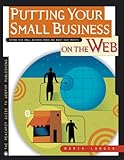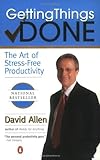A history of the planets.
 Miraz was kind enough to get me two items from my Amazon.com wish list. One of them was The Planets by Dava Sobel. It’s a kind of history of the planets — when they were discovered, how they were named, what’s important about them from a historic point of view, and more.
Miraz was kind enough to get me two items from my Amazon.com wish list. One of them was The Planets by Dava Sobel. It’s a kind of history of the planets — when they were discovered, how they were named, what’s important about them from a historic point of view, and more.
The book is full of fascinating details. For example, did you know that Charles Darwin traveled onboard the H.M.S. Beagle at the age of 22 to be a “gentleman’s companion” for the captain? And that the Beagle’s 1831 mission was to map the coastline of the New World?
Or that Uranus, which was discovered by Sir. William Herschel in 1781, was at first thought to be a comet?
Or that the four largest moons of Jupiter, which were discovered by Galileo in 1610, were named for Florentine Prince Cosimo de’ Medici — a ploy Galileo hoped would get him a position in the Tuscan court? (Surely you must know that Galileo was jailed by the church for his theory that the earth revolved around the sun.)
The book offers plenty of science, too. In reading it, you can learn about the composition of the Sun, planets, and important moons of the solar system (including ours). You can learn about how long it takes for each planet to rotate around its access and revolve around the sun. You can learn about exploratory fly-bys and landings and what the planets look like.
About the only thing the book doesn’t provide are photos. The author goes into great detail about how the planets look to the exploratory vehicles that have photographed them, but doesn’t include a single photograph. Yes, there’s original artwork for each body’s chapter and it’s certainly quite attractive and interesting, but there aren’t any photos to accompany the author’s descriptions. To me, that’s a major shortcoming in this book.

 A side note here. I’ve read two other books by Dava Sobel: Longitude and Galileo’s Daughter. The edition of Longitude I read was hardcover and richly illustrated with photos, drawings, and more. (I regret giving it away; I would like to read it again.) An excellent history of the importance of longitude for navigation and the work of a man to create a perfect timepiece for shipboard use. Galileo’s Daughter was interesting but not quite as enjoyable for me. It consisted primarily of letters from his daughter, a nun, that helped tell part of his life story.
A side note here. I’ve read two other books by Dava Sobel: Longitude and Galileo’s Daughter. The edition of Longitude I read was hardcover and richly illustrated with photos, drawings, and more. (I regret giving it away; I would like to read it again.) An excellent history of the importance of longitude for navigation and the work of a man to create a perfect timepiece for shipboard use. Galileo’s Daughter was interesting but not quite as enjoyable for me. It consisted primarily of letters from his daughter, a nun, that helped tell part of his life story.
What’s clear to me from reading three of Sobel’s books is that she has a talent for making history interesting and readable. I highly recommend her work. But whenever possible, go with illustrated editions. I really think they make the books come alive.


 The book is an account of the finding of a painting by
The book is an account of the finding of a painting by 


